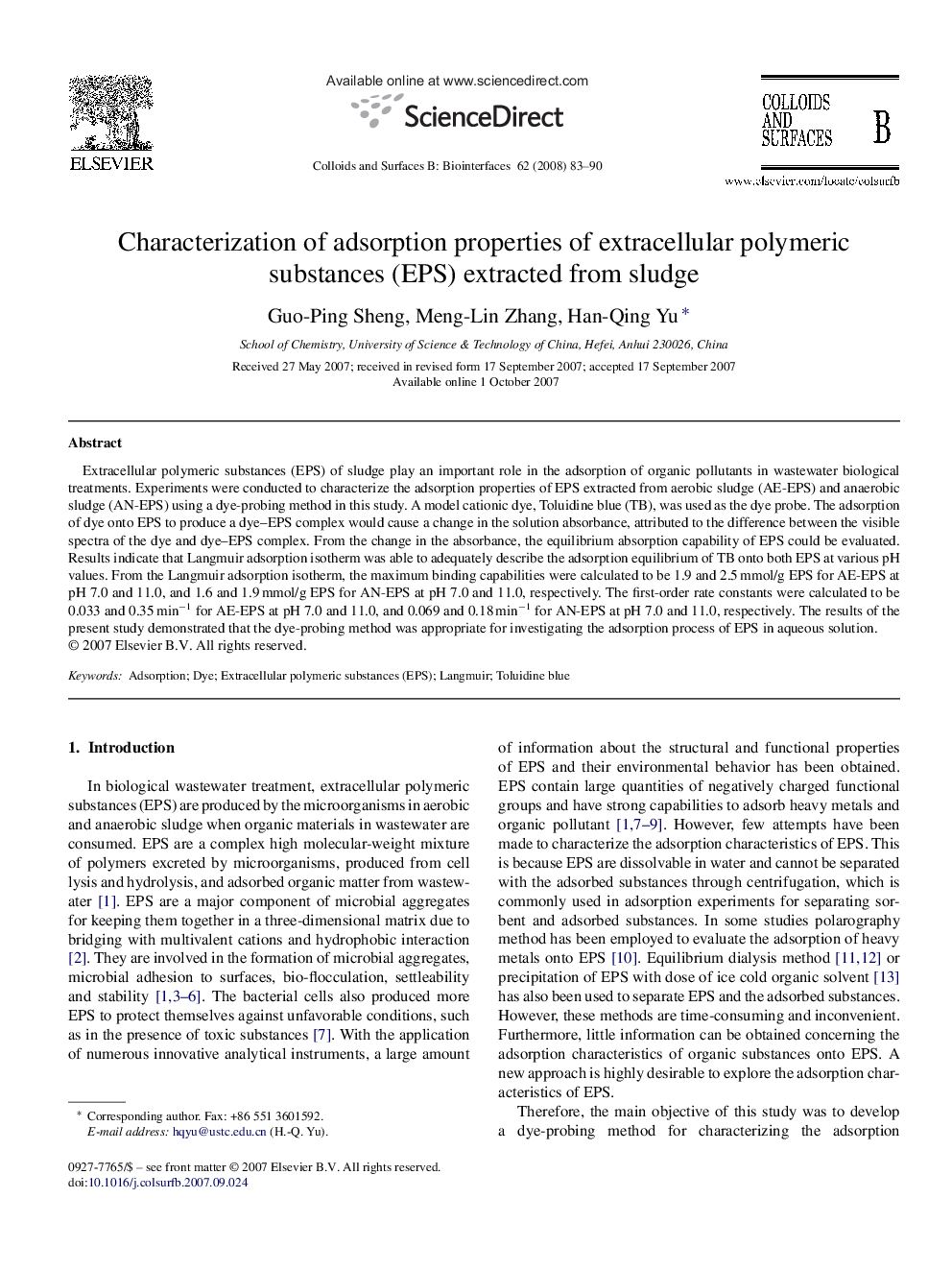| Article ID | Journal | Published Year | Pages | File Type |
|---|---|---|---|---|
| 602487 | Colloids and Surfaces B: Biointerfaces | 2008 | 8 Pages |
Extracellular polymeric substances (EPS) of sludge play an important role in the adsorption of organic pollutants in wastewater biological treatments. Experiments were conducted to characterize the adsorption properties of EPS extracted from aerobic sludge (AE-EPS) and anaerobic sludge (AN-EPS) using a dye-probing method in this study. A model cationic dye, Toluidine blue (TB), was used as the dye probe. The adsorption of dye onto EPS to produce a dye–EPS complex would cause a change in the solution absorbance, attributed to the difference between the visible spectra of the dye and dye–EPS complex. From the change in the absorbance, the equilibrium absorption capability of EPS could be evaluated. Results indicate that Langmuir adsorption isotherm was able to adequately describe the adsorption equilibrium of TB onto both EPS at various pH values. From the Langmuir adsorption isotherm, the maximum binding capabilities were calculated to be 1.9 and 2.5 mmol/g EPS for AE-EPS at pH 7.0 and 11.0, and 1.6 and 1.9 mmol/g EPS for AN-EPS at pH 7.0 and 11.0, respectively. The first-order rate constants were calculated to be 0.033 and 0.35 min−1 for AE-EPS at pH 7.0 and 11.0, and 0.069 and 0.18 min−1 for AN-EPS at pH 7.0 and 11.0, respectively. The results of the present study demonstrated that the dye-probing method was appropriate for investigating the adsorption process of EPS in aqueous solution.
